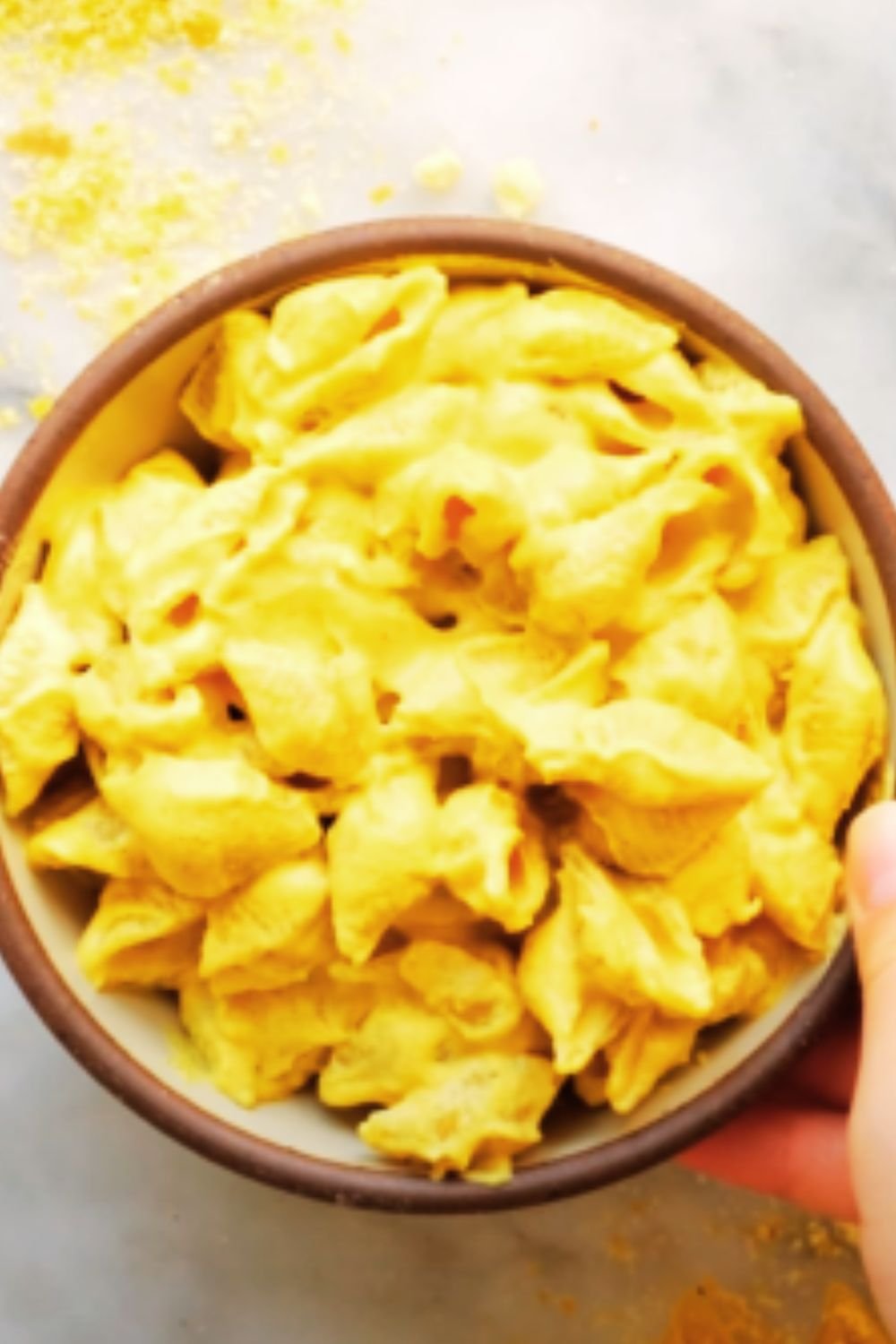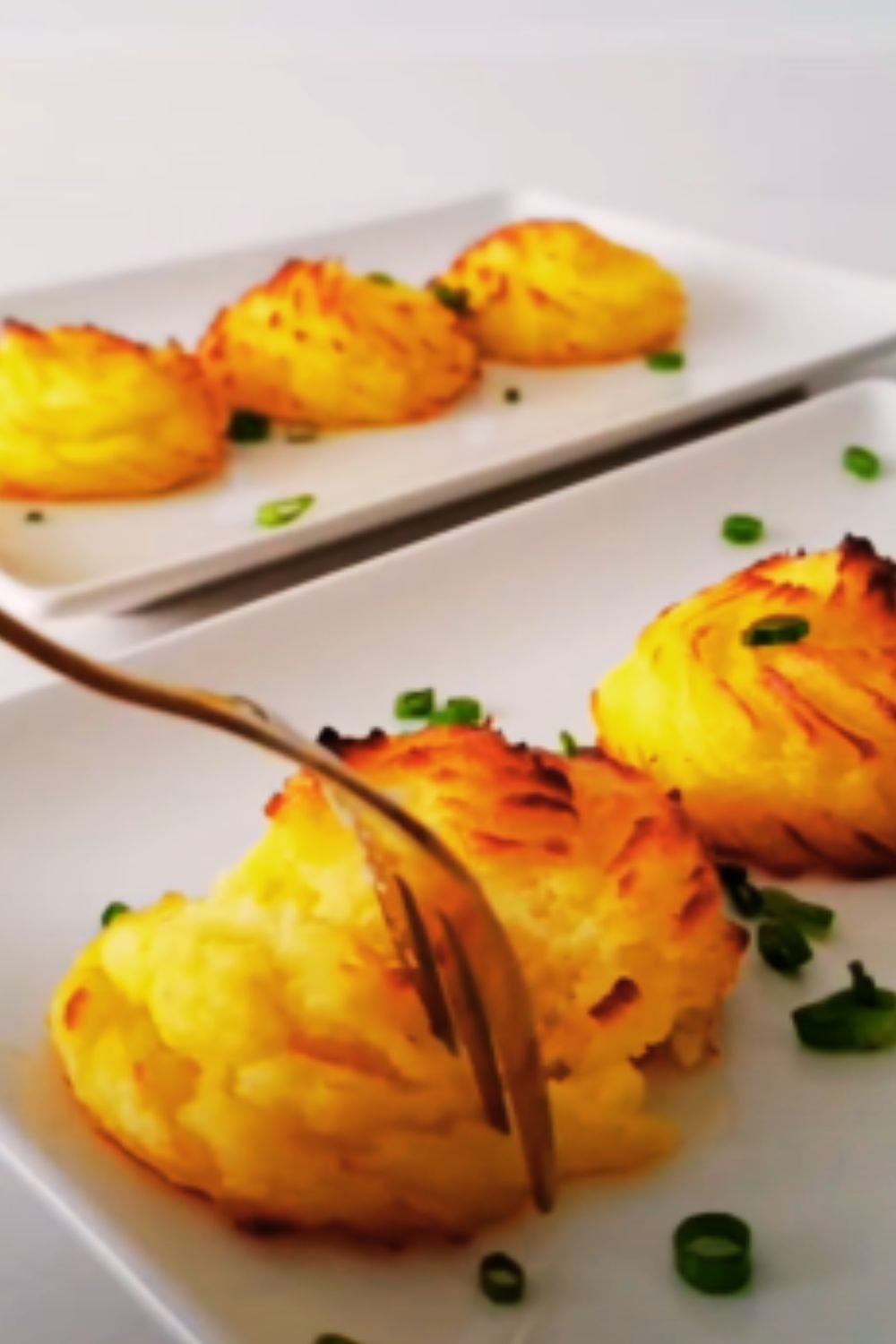There’s something magical that happens when you elevate a childhood favorite into something extraordinary. My journey with macaroni and cheese began like most people’s – with the familiar blue box and powdered cheese packet. But over the years, I’ve discovered that true mac and cheese mastery lies in understanding how premium ingredients transform this humble dish into restaurant-quality comfort food.
Today, I’m sharing my signature recipe for Macaroni and Cheese with Bacon and Gruyère – a dish that combines the smoky richness of crispy bacon with the nutty, complex flavors of Swiss Gruyère cheese. This isn’t your average weeknight dinner; it’s the kind of dish that makes people stop mid-conversation and ask for the recipe.
Understanding the Foundation: Why These Ingredients Matter
The Pasta: Choosing Your Canvas
The foundation of exceptional mac and cheese starts with the pasta itself. While traditional elbow macaroni works beautifully, I’ve experimented with various shapes over the years. The key is selecting pasta with plenty of nooks and crannies to hold that luxurious cheese sauce.
Best Pasta Shapes for Mac and Cheese:
- Cavatappi (corkscrew-shaped tubes)
- Shells (conchiglie)
- Penne rigate
- Traditional elbow macaroni
- Gemelli (twisted pasta)
The cooking technique matters just as much as the shape. I always cook my pasta to just shy of al dente – about one minute less than the package directions suggest. This prevents mushy pasta when the dish goes into the oven for its final bake.
The Star: Gruyère Cheese Explained
Gruyère cheese transforms ordinary mac and cheese into something spectacular. This Swiss cheese, aged between 5 to 12 months, develops complex nutty and slightly sweet flavors that complement the smokiness of bacon perfectly. Unlike processed cheeses, Gruyère melts smoothly while maintaining its distinctive character.
Gruyère Characteristics:
- Texture: Firm, slightly granular
- Flavor Profile: Nutty, fruity, with subtle earthiness
- Melting Properties: Excellent, creates smooth sauces
- Aging: 5-12 months for optimal flavor
- Origin: Gruyère district of Switzerland
The Smoky Element: Bacon Selection and Preparation
Not all bacon is created equal, and the type you choose significantly impacts the final dish. I prefer thick-cut bacon from heritage pork breeds when available, as it provides better texture contrast and more robust flavor. The bacon serves multiple purposes in this recipe – it adds smoky depth, textural interest, and its rendered fat contributes to the overall richness.
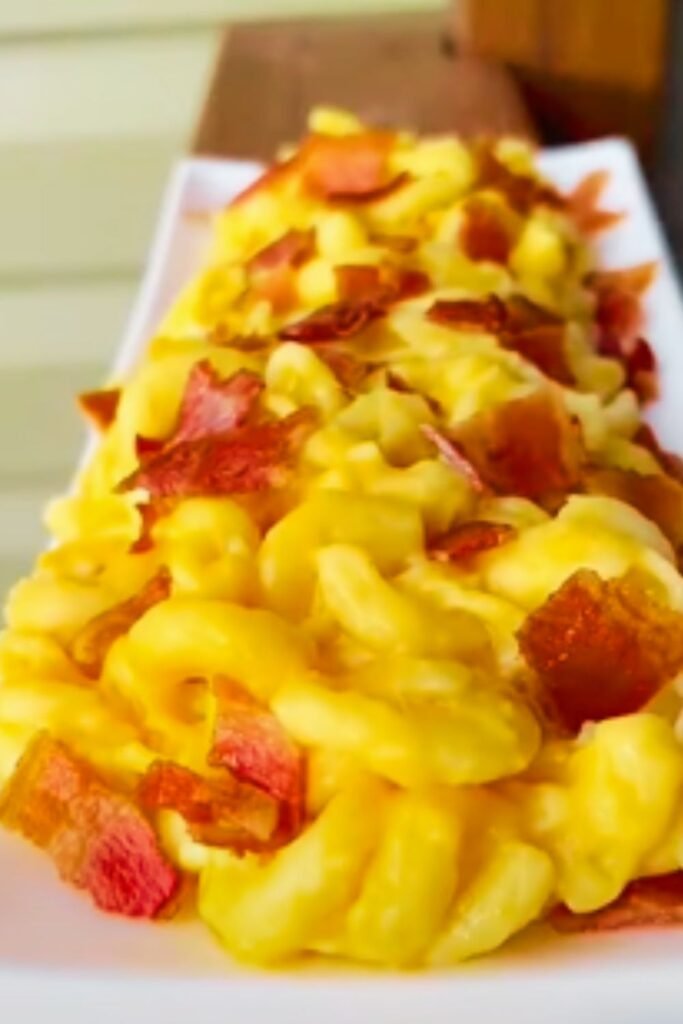
The Complete Recipe: Step-by-Step Mastery
Ingredients List
For the Pasta Base:
- 1 pound cavatappi or elbow macaroni
- 8 slices thick-cut bacon, chopped
- 4 tablespoons unsalted butter
- 1/4 cup all-purpose flour
- 3 cups whole milk, warmed
- 1 cup heavy cream
For the Cheese Blend:
- 8 ounces Gruyère cheese, freshly grated
- 4 ounces sharp white cheddar, grated
- 2 ounces Parmesan cheese, finely grated
- 1/2 teaspoon Dijon mustard
- 1/4 teaspoon freshly grated nutmeg
For Seasoning and Finishing:
- 1 teaspoon kosher salt
- 1/2 teaspoon white pepper
- 1/4 teaspoon smoked paprika
- 2 tablespoons fresh chives, finely chopped
- 1/2 cup panko breadcrumbs
- 2 tablespoons butter, melted
Detailed Preparation Method
Phase 1: Preparing the Components
Step 1: Bacon Preparation Begin by preheating your oven to 375°F. In a large, heavy-bottomed pot or Dutch oven, cook the chopped bacon over medium heat until it’s crispy and golden brown, approximately 6-8 minutes. The key is achieving that perfect balance where the bacon is crispy but not burnt. Remove the bacon with a slotted spoon and set aside on paper towels. Reserve 2 tablespoons of the bacon fat in the pot – this adds incredible flavor to our roux.
Step 2: Pasta Cooking Technique While the bacon cooks, bring a large pot of heavily salted water to a rolling boil. The water should taste like seawater – this is your only opportunity to season the pasta itself. Cook the pasta for one minute less than the package directions indicate. This ensures it won’t become mushy during the final baking process. Reserve 1 cup of the starchy pasta water before draining – this liquid gold can help adjust the sauce consistency if needed.
Phase 2: Creating the Perfect Cheese Sauce
Step 3: Building the Roux In the same pot where you cooked the bacon, add the butter to the reserved bacon fat. Once melted and bubbling, whisk in the flour gradually, creating a smooth paste. Cook this roux for 2-3 minutes, whisking constantly, until it’s golden and fragrant. This cooking process removes the raw flour taste and develops a nutty aroma that enhances the overall flavor profile.
Step 4: The Gradual Milk Addition Here’s where patience pays off. Add the warmed milk gradually, whisking constantly to prevent lumps. Start with about 1/2 cup, whisking until completely smooth before adding more. This gradual process ensures a silky, lump-free base. Once all the milk is incorporated, add the heavy cream and bring the mixture to a gentle simmer.
Step 5: Cheese Integration Technique Remove the pot from heat before adding cheese – this prevents the proteins from seizing and creating a grainy texture. Add the cheeses in handfuls, whisking each addition until completely melted before adding more. Start with the Gruyère, then the cheddar, and finish with the Parmesan. Stir in the Dijon mustard and seasonings.
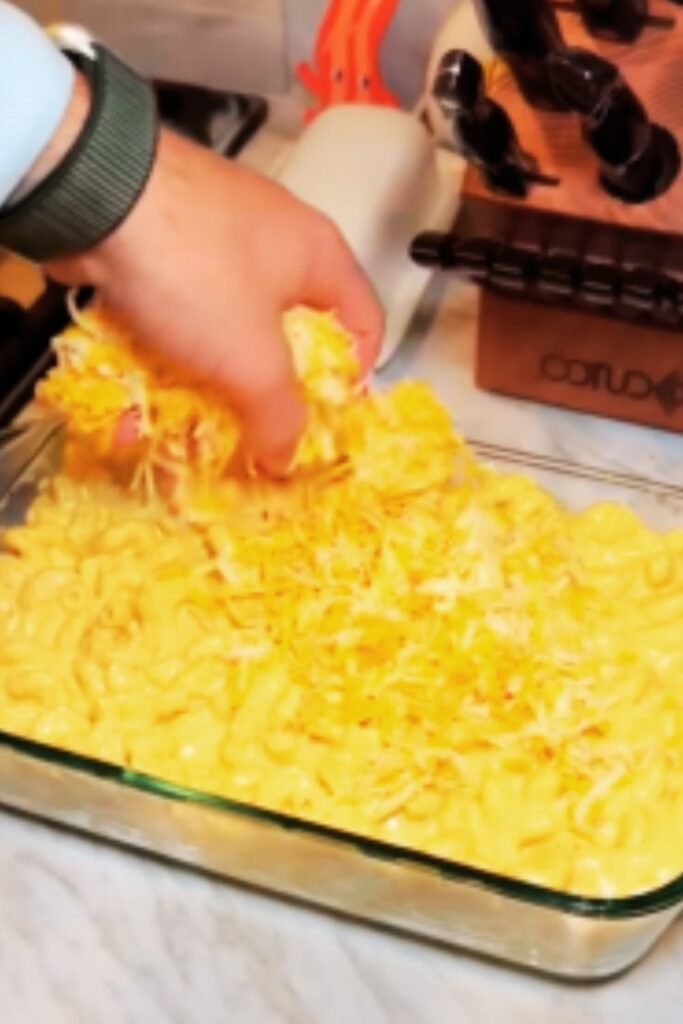
Phase 3: Assembly and Final Baking
Step 6: Combining Elements Add the cooked pasta to the cheese sauce, folding gently to coat every piece. If the sauce seems thick, add small amounts of the reserved pasta water until you achieve your desired consistency. The mixture should coat the pasta generously but not be swimming in sauce.
Step 7: The Final Touch Transfer half the mac and cheese to a buttered 9×13-inch baking dish. Sprinkle half the crispy bacon over this layer, then add the remaining pasta mixture. Top with the remaining bacon, the panko breadcrumbs mixed with melted butter, and an extra sprinkle of Gruyère if desired.
Step 8: The Perfect Bake Bake for 25-30 minutes until the top is golden brown and the edges are bubbling. Let it rest for 10 minutes before serving – this allows the sauce to set slightly and makes serving much easier.
Nutritional Information and Serving Details
| Nutritional Component | Per Serving (8 servings) | Daily Value % |
|---|---|---|
| Calories | 645 | 32% |
| Total Fat | 42g | 54% |
| Saturated Fat | 24g | 120% |
| Cholesterol | 125mg | 42% |
| Sodium | 890mg | 39% |
| Carbohydrates | 45g | 16% |
| Dietary Fiber | 2g | 7% |
| Protein | 28g | 56% |
| Calcium | 520mg | 52% |
| Iron | 2.1mg | 12% |
Ingredient Substitutions and Variations
Cheese Alternatives
| Original Cheese | Substitute Option | Flavor Impact | Melting Quality |
|---|---|---|---|
| Gruyère | Emmental | Milder, nuttier | Excellent |
| Gruyère | Comté | Similar complexity | Excellent |
| Gruyère | Fontina | Creamier, less sharp | Very good |
| Sharp Cheddar | Aged Gouda | Sweeter, caramel notes | Good |
| Parmesan | Pecorino Romano | Sharper, saltier | Good |
Dietary Modifications
Gluten-Free Version: Replace regular pasta with your favorite gluten-free variety (corn-based works exceptionally well). Substitute the all-purpose flour with a gluten-free flour blend or cornstarch for thickening the sauce.
Lighter Version:
- Use 2% milk instead of whole milk
- Reduce heavy cream to 1/2 cup
- Use turkey bacon instead of pork bacon
- Incorporate pureed cauliflower (about 1 cup) into the cheese sauce for added nutrition and reduced calories
Vegetarian Adaptation: Replace bacon with roasted mushrooms, caramelized onions, or crispy fried shallots. Each provides different flavor profiles while maintaining textural interest.
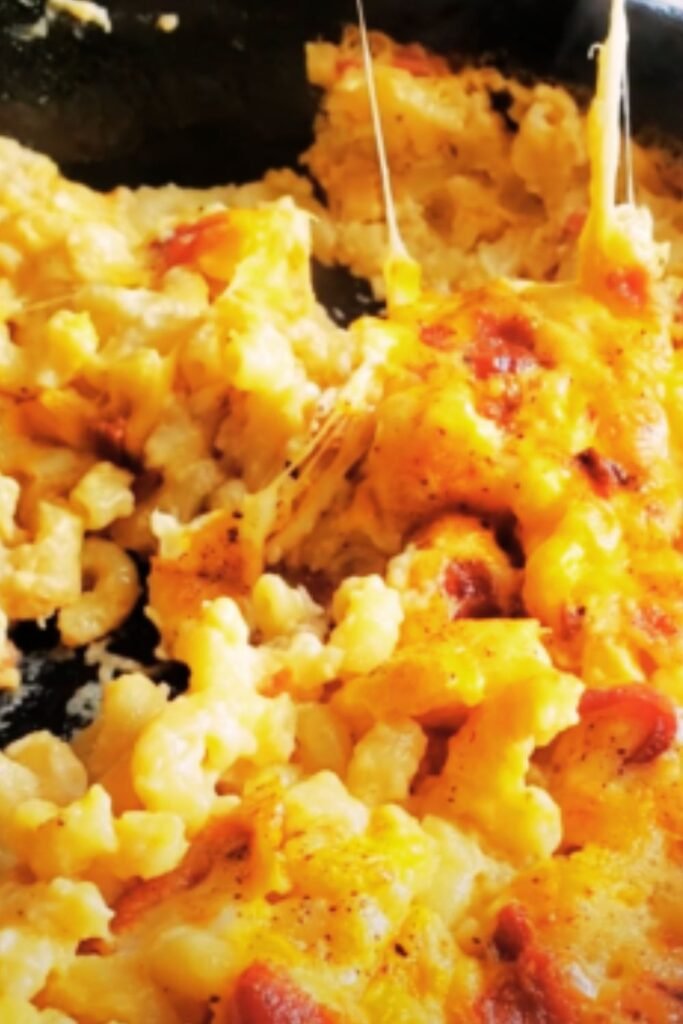
Advanced Techniques and Professional Tips
Temperature Control Mastery
Temperature control separates amateur attempts from professional results. When making the cheese sauce, never let it boil once the cheese is added. The ideal temperature is between 160-180°F, hot enough to melt the cheese smoothly but not so hot that proteins coagulate and create graininess.
Cheese Grating Techniques
Always grate cheese fresh for the best melting properties and flavor. Pre-shredded cheese contains anti-caking agents that prevent smooth melting. I use a box grater’s large holes for the Gruyère and cheddar, and the fine holes for Parmesan.
Make-Ahead Strategies
This dish can be assembled up to 24 hours in advance. Prepare through step 7, cover tightly with plastic wrap, and refrigerate. When ready to bake, remove from refrigerator 30 minutes before baking to bring closer to room temperature, then add 10-15 minutes to the baking time.
Reheating Methods
Oven Method (Best): Cover with foil and reheat at 325°F for 20-25 minutes until heated through.
Stovetop Method: Add a splash of milk or cream and reheat gently over low heat, stirring frequently.
Microwave Method: Use 50% power and stir every minute to prevent uneven heating.
Serving Suggestions and Pairings
Complementary Side Dishes
The richness of this mac and cheese pairs beautifully with lighter, acidic accompaniments that cut through the cheese and bacon:
- Simple Green Salad: Mixed greens with lemon vinaigrette
- Roasted Brussels Sprouts: With balsamic glaze
- Steamed Broccoli: With lemon zest
- Tomato Salad: With fresh herbs and red wine vinegar
- Coleslaw: Provides tangy crunch contrast
Portion Considerations
This recipe serves 8 as a side dish or 6 as a main course. The richness means a little goes a long way, making it perfect for potluck gatherings or family dinners where it can stretch to feed a crowd.
Troubleshooting Common Issues
Problem: Grainy Cheese Sauce
Causes:
- Adding cheese to sauce that’s too hot
- Using pre-shredded cheese
- Overcooking after cheese addition
Solutions:
- Remove from heat before adding cheese
- Use freshly grated cheese only
- Add cheese gradually and whisk gently
Problem: Dry Mac and Cheese
Causes:
- Overbaking
- Sauce too thick initially
- Not enough sauce-to-pasta ratio
Solutions:
- Cover with foil if top browns too quickly
- Add pasta water or milk to thin sauce
- Ensure generous sauce coating before baking
Problem: Bland Flavor
Causes:
- Under-seasoning
- Low-quality cheese
- Not enough bacon flavor integration
Solutions:
- Season each component separately
- Invest in quality Gruyère cheese
- Use bacon fat in the roux for deeper flavor
Storage and Food Safety
Refrigerator Storage
Properly stored mac and cheese keeps in the refrigerator for 3-4 days. Transfer to airtight containers within 2 hours of cooking to maintain food safety standards. The texture may change slightly upon reheating, but the flavors often improve overnight as they meld together.
Freezer Storage
This recipe freezes well for up to 3 months. For best results, freeze individual portions in freezer-safe containers. Thaw overnight in the refrigerator before reheating. Note that the texture may be slightly different after freezing, but the flavor remains excellent.
Food Safety Guidelines
| Temperature Zone | Time Limit | Safety Notes |
|---|---|---|
| Room Temperature | 2 hours maximum | Bacterial growth accelerates after 2 hours |
| Refrigerator (40°F or below) | 3-4 days | Store in airtight containers |
| Freezer (0°F or below) | 3 months | Best quality maintained |
| Reheating Temperature | 165°F internal | Use food thermometer to verify |
Questions and Answers
Q: Can I make this recipe without bacon for vegetarians?
Absolutely! I’ve created several vegetarian versions that are equally delicious. Try substituting the bacon with roasted mushrooms (cremini or shiitake work wonderfully), caramelized onions, or even roasted butternut squash for sweetness. Each brings its own unique flavor profile while maintaining the dish’s satisfying nature.
Q: What’s the best way to achieve that perfect golden-brown top?
The secret lies in the final 5 minutes of baking. If your top isn’t browning as desired, switch to the broiler for 2-3 minutes, watching carefully to prevent burning. The panko breadcrumbs mixed with melted butter create that coveted crunchy texture contrast.
Q: Can I substitute Gruyère with a more budget-friendly cheese?
While Gruyère provides irreplaceable flavor complexity, I understand budget considerations. Swiss cheese offers similar melting properties with a milder taste, or try mixing sharp cheddar with a small amount of smoked gouda for depth. The key is using at least one aged cheese for character.
Q: How do I prevent the cheese sauce from breaking or becoming grainy?
Temperature control is crucial. Never add cheese to boiling liquid, and always remove the pot from heat before incorporating cheese. Add cheese gradually, one handful at a time, whisking until completely melted before adding more. Using freshly grated cheese rather than pre-shredded also prevents graininess.
Q: Can this recipe be doubled for large gatherings?
Yes, but use two separate baking dishes rather than one enormous one to ensure even cooking. A single large batch may not cook evenly, resulting in overcooked edges and undercooked center. Two 9×13 dishes work perfectly for doubling the recipe.
Q: What pasta shapes work best if I can’t find cavatappi?
Any pasta with ridges or curves that hold sauce well will work beautifully. Shells, penne rigate, rotini, or even classic elbow macaroni are excellent choices. Avoid long, thin pasta like spaghetti or linguine, as they don’t hold the cheese sauce effectively.
Q: How far in advance can I prepare this dish?
You can assemble the entire dish up to 24 hours ahead. Cover tightly and refrigerate, then bring to room temperature for 30 minutes before baking. Add 10-15 extra minutes to the baking time if going straight from cold to oven.
Q: Why does my mac and cheese sometimes turn out dry?
Dryness usually results from overbaking or insufficient sauce. The sauce should generously coat the pasta before baking – it may look like too much sauce initially, but pasta absorbs liquid during baking. If it looks dry halfway through baking, tent with foil to prevent further moisture loss.
This Macaroni and Cheese with Bacon and Gruyère represents the perfect marriage of comfort and sophistication. The smoky bacon provides textural contrast and depth, while the Gruyère elevates the entire dish with its complex, nutty character. Whether serving it as a side dish for a special dinner or making it the star of a casual gathering, this recipe delivers consistent, impressive results that will have everyone asking for seconds.
The key to mastering this dish lies in understanding each component’s role and taking time with the cheese sauce. Quality ingredients make a noticeable difference, but the techniques I’ve shared ensure success even with more modest ingredient selections. Most importantly, don’t be afraid to make it your own – cooking should be an expression of your taste and creativity.
Remember, the best mac and cheese is the one that brings people together around your table, creating memories one delicious bite at a time.
